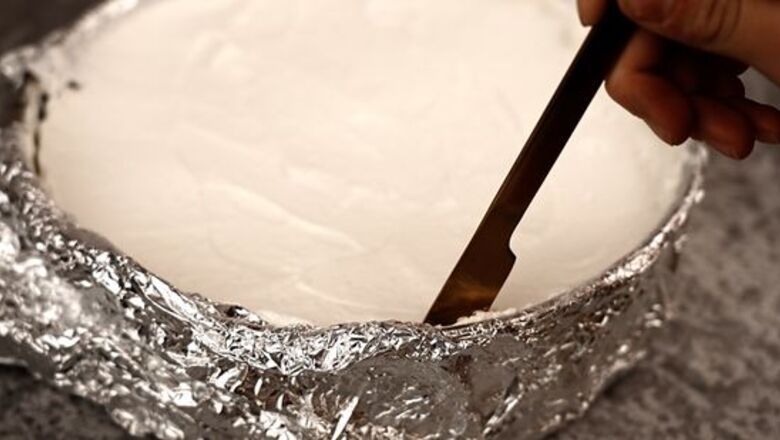
views
- Loosen the sides with a knife, then heat the pan on a burner to loosen the cake from its base before removing the pan.
- Remove the sides of the pan, then use 3 large spatulas (with the help of a friend) to slide the cake off the base.
- Line the bottom of the pan in parchment before baking to make removal a cinch.
Sliding the Cake off the Springform Base
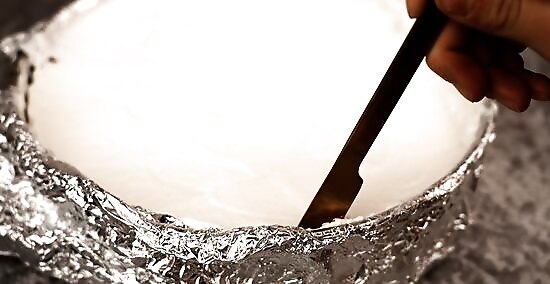
Loosen the sides with a knife and hot water. When you're ready to serve the cake, the knife and hot water trick is the best way to remove the sides of the pan. Take a butter knife and run it under hot water, or dip it in a cup of hot water nearby. Run the knife along the edges of the cake against the sides of the pan. This loosens the cake while keeping the sides smooth. You'll need to wet the knife every few inches to keep it from drying and dragging against the side of the cheesecake. Don't use cold water, as it isn't as effective as hot water. Using cold increases the chances that the cake will crack or break. Chill the cake overnight (if possible) for the best results.

Use heat to loosen the cake from the base. Removing a cake from the springform pan base is more difficult than taking off the sides. It can help to use a source of heat to slightly heat the bottom of the cake, so that the butter in the crust softens and the cake is easier to move. Use one of the following techniques: A cook's blowtorch. If you're lucky enough to have one in your kitchen, this is a great tool for warming up the base of a cheesecake. Hold the pan with a potholder. Turn on the torch and with extreme care pass the lit blowtorch under the base. This will heat the butter and soften the cheese just enough to slide the cake out of the pan. Take care not to overheat it! A gas burner. Hold the pan with a potholder. Turn on your gas burner and carefully hold the cheesecake over the burner to heat up the bottom of the cake. If you don't have a gas burner, you can try a lighter. Again, be careful not to overheat the pan. It will get very hot. A knife wet with hot water. This is the least preferable method, since wetting the crust of the cake will affect its texture. If you don't have tools to directly heat the bottom of the pan, this is a good option.
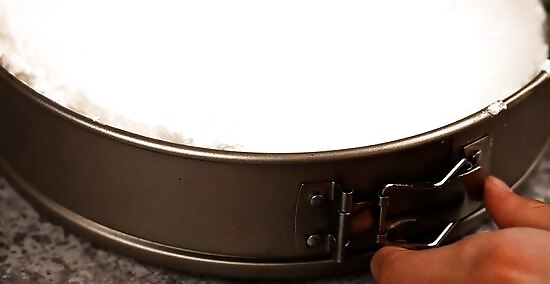
Remove the sides of the pan. Unlatch the pan and gently lift away the sides. A chilled cake will remain upright, rather than slumping to one side of the other. If you see any small cracks or spots that need correcting, run a knife under hot water and gently smooth out the rough parts.

Slide the cake onto a platter. Right after heating the bottom, very gently slide the cake onto a platter that you have waiting right next to it. If you have trouble removing the cake from the base, gently push it with the flat side of a large knife to encourage it to move off the base. Push the crush, not the soft cheese filling, which is easily dented. Many cooks simply leave the cake on its base instead of attempting to slide it off. Feel free to place the entire cake base on the serving platter. You can hide its edges by decorating around the cake with sliced strawberries or raspberries.
Using Spatulas to Lift the Cake
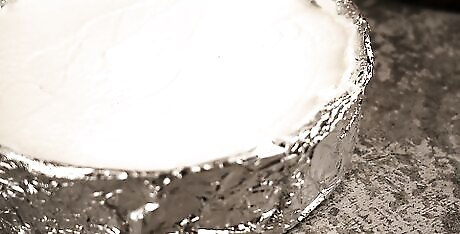
Chill the cake overnight. A cake that is warm or at room temperature will fall apart if you try to remove it from the pan. It must be entirely firm before you attempt do anything with it.

Remove the sides of the springform pan. Run a knife dipped in hot water along the edge of the cheesecake to loosen it from the sides of the pan. Re-dip the knife as necessary to prevent the knife from dragging at the cake. After loosening the cake, pop open the latch on the pan and lift away the sides. Don't use cold water to loosen the cake, since it isn't as effective as hot water. You can cover any cracks or gouges on the sides of the cake by using a knife dipped in hot water to smooth them over.
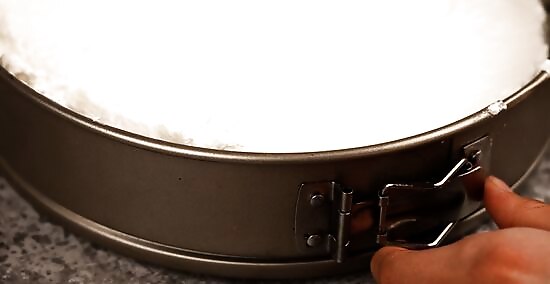
Remove the sides of the pan. Unlatch the pan and gently lift away the sides. A chilled cake will remain upright, rather than slumping to one side of the other. If you see any small cracks or spots that need correcting, run a knife under hot water and gently smooth out the rough parts.

Gather three large spatulas and a friend. The spatula method requires someone else's help, since the cake might break if you try to support it using just two spatulas instead of three. Three spatulas should be enough to lift the cake and safely transfer it to a platter. Choose large, flat, thin spatulas that will easily slide under the cake. You may also want to heat the bottom of the cake before attempting the transfer. This will make it easier for the cake to unstick from the bottom of the springform pan.

Slide the spatulas under the cake. Very carefully slide them between the crust and the springform pan bottom. Keep sliding as far as you can, and try to cover as much area under the cake as possible. Space the spatulas evenly around the cake so no one spot is unsupported.
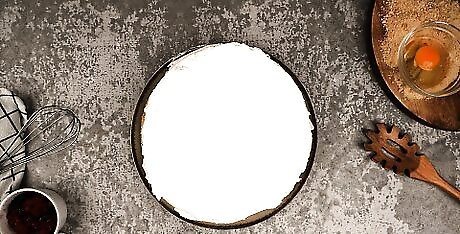
Lift the cake onto a platter. Hold two of the spatulas and have a friend grab the third. Count to three with your friend and gently lift the cake onto a platter you have waiting nearby. Do it quickly, but carefully, to achieve the best results. Make sure you lift at the exact same moment, using the same speed, or else the cake will break. Once you have the cake on the platter, gently slide the spatulas out from under the cake.
Baking the Cake on Parchment
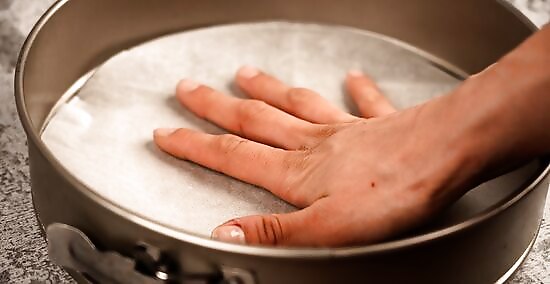
Line the pan with a circle of parchment paper. If you haven't yet baked your cake, this trick will make removing the pan much easier. Cut out a circle of parchment paper slightly larger than the base of the springform pan you're using. Press it into the bottom of the assembled springform pan. You'll bake the cake on top of the parchment, rather than directly on the pan. This way you can just slide the bottom of the cake off the pan with the parchment, which looks a lot less noticeable than a metal base. Some chefs also like to use a cardboard cutout to lend the cake a little more support. Cut out a piece of cardboard the same size as the base of the springform pan. Press a piece of parchment paper over the cardboard. If you want to line the sides of the pan with parchment as well, cut a strip long enough to wrap around the inside of the pan and slightly thicker than the depth of the pan. Now you can make your cheesecake as normal, and when it is completely chilled the cake can be removed with ease from the pan.
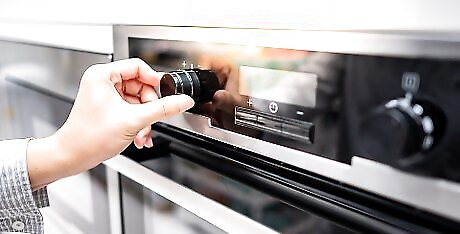
Bake the cheesecake according to instructions. The presence of parchment won't change anything about the baking process. Go ahead and bake the cheesecake as usual.
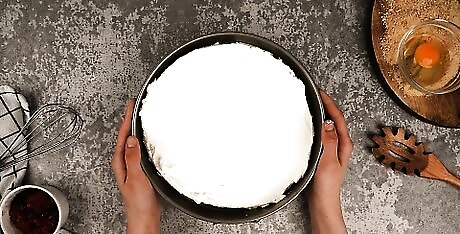
Chill the cheesecake overnight. Even parchment won't save a cheesecake that's still warm when you try to remove it from the pan. Be sure it's thoroughly chilled before you try to lift away the sides or bottom.
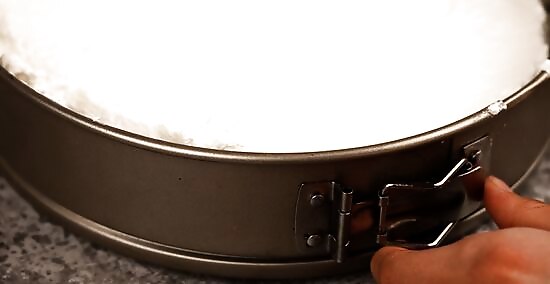
Remove the sides of the pan. If you didn't line the sides with parchment, run a knife dipped in hot water around the edges of the cake to loosen it, then unclick the pan's sides and lift them away. If you did line the sides with parchment, you can skip the knife trick and simply take off the sides of the pan. Then very gently pull away the strip of parchment to reveal the cake underneath.
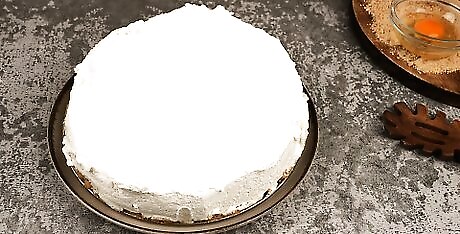
Slide the cake off the base of the pan. Grasp the edge of the parchment paper and gently slide the cake onto a serving plate. The parchment will lift easily from the bottom of the springform pan.














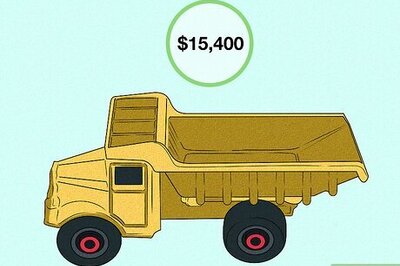





Comments
0 comment